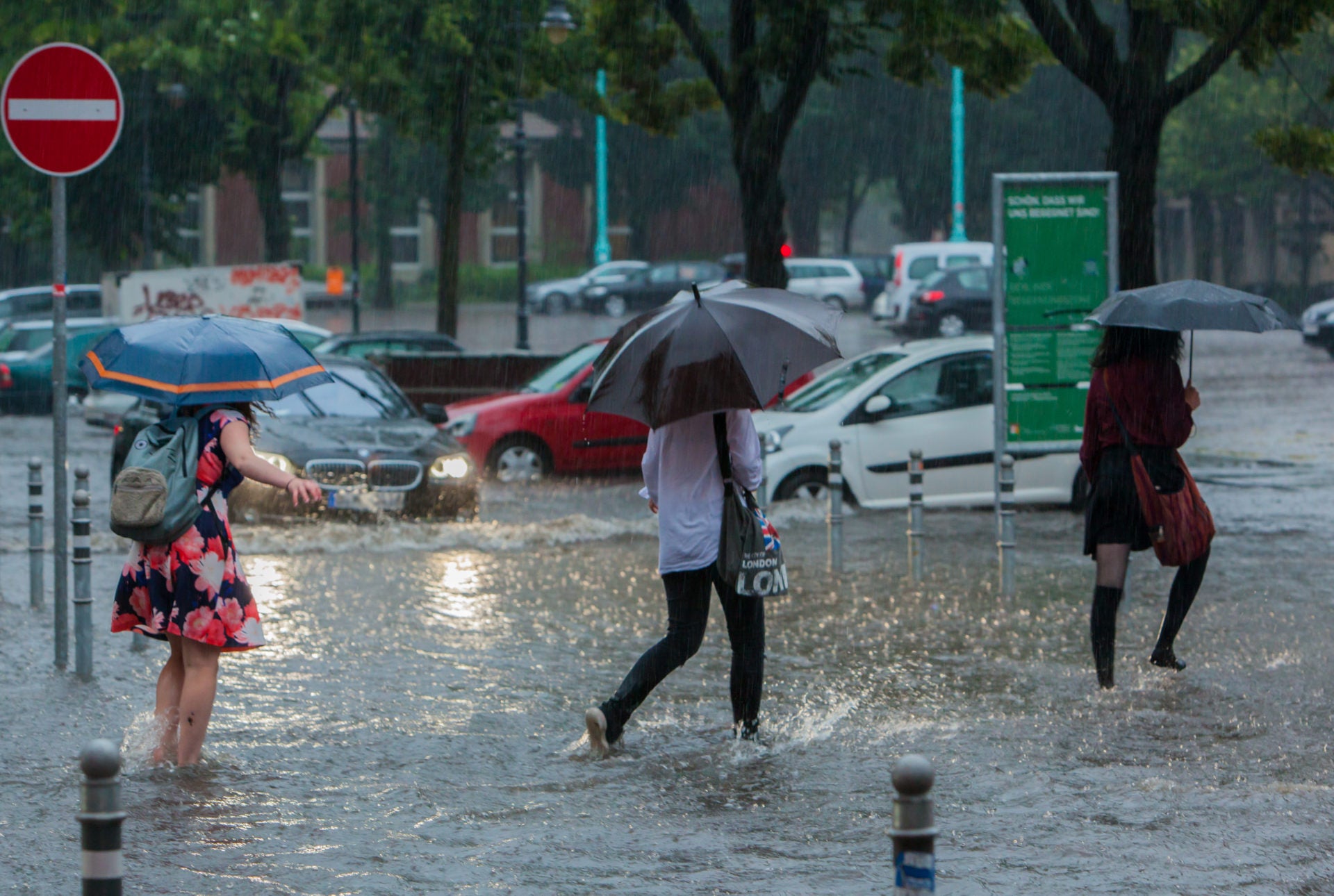
An analysis of satellite data has revealed global patterns of extreme rainfall, which could lead to more accurate weather forecasts.
Extreme rainfall, which is defined as rainfall greater than 100 mm in 24 hours, is becoming an increasingly common occurrence, and is closely linked to climate change.
Previously, it was possible to observe patterns in rainfall on a local level, for example tracking heavy rainfall across Europe, but new research reveals that there are also larger-scale global patterns to extreme rainfall events.
Led by a team at Imperial College London and the Potsdam Institute for Climate Impact Research in Germany, the study has revealed that these patterns connect through the atmosphere rather than over land, meaning extreme rainfall in Europe can precede extreme rainfall in India without extreme rain in the countries in between.
This insight could be used to better predict when and where heavy rainfall will occur, making it easier to test global climate models and better prepare for extreme weather.
Extreme rainfall on the rise
Over the last few years, many parts of the world have experienced high temperatures and heavy downpours, with category 4 and 5 storms occurring more frequently, leaving places vulnerable to flooding and causing severe damage to landscapes and infrastructure.
How well do you really know your competitors?
Access the most comprehensive Company Profiles on the market, powered by GlobalData. Save hours of research. Gain competitive edge.

Thank you!
Your download email will arrive shortly
Not ready to buy yet? Download a free sample
We are confident about the unique quality of our Company Profiles. However, we want you to make the most beneficial decision for your business, so we offer a free sample that you can download by submitting the below form
By GlobalDataAccording to European Academies’ Science Advisory Council, floods and extreme rainfall events around the world have increased by more than 50% over the last decade, and this is only set to continue as the effects of global warming become more severe.
The study provides a ‘baseline’ for climate change studies. By knowing how the atmosphere behaves to create patterns of extreme rainfall events, scientists can gain new insights into changes that may be caused by global warming.
Lead author of the study Dr Niklas Boers, from Potsdam Institute for Climate Impact Research and the Grantham Institute–Climate Change and Environment at Imperial, said:
“Uncovering this global pattern of connections in the data can improve weather and climate models. This is especially true for the emerging picture of couplings between the tropics and the European and North American regions and their consequences for extreme rainfall.
“This finding could also help us understand the connections between different monsoon systems and extreme events within them. I hope that our results will, in the long term, help to predict extreme rainfall and associated flash floods and landslides in northeast Pakistan, north India and Nepal.”
Harnessing satellite data to map global rainfall
To find patterns in extreme rainfall events, the team developed a new method of studying high-resolution satellite data of rainfall. The data comes from the Tropical Rainfall Measuring Mission and covers the region between 50⁰ North and South since 1998.
By breaking the globe into a grid, the team could see where events occurred and determine how ‘synchronous’ they were – a way of measuring whether two events are connected, even if they do not occur at the same time.
The results from this ‘complex network’ model revealed a how the events were connected. The patterns appear to be created by Rossby waves – undulating high altitude winds that have a big impact on weather.
Rossby waves have been previously connected to regular rainfall, but this study is the first to connect them to extreme rainfall event and the relationship between this in different parts of the world.
Co-author Jürgen Kurths from the Potsdam Institute for Climate Impact Research believes that the study has positive implications for the future of the field:
“This truly interdisciplinary study, which combines complex network science with atmospheric science, is an outstanding example for the great potential of the rather young field of complexity studies. As well providing insight into the spread of epidemics or information flow across networks, it can also be used to improve our understanding of extreme events in the climate system.”






